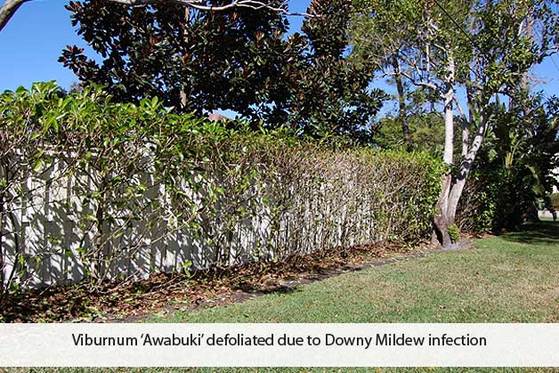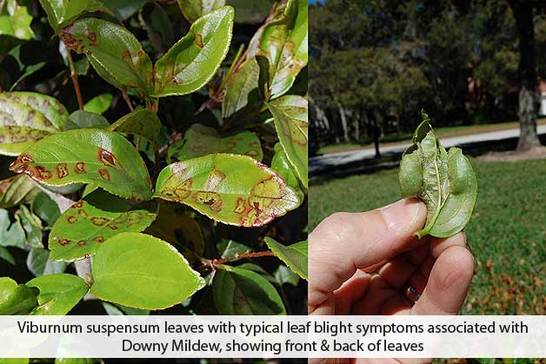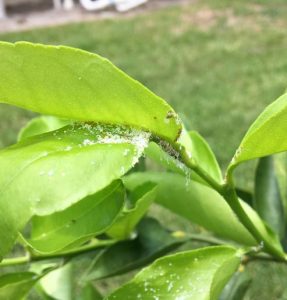Viburnum suspensum
Downy Mildew of Viburnum, caused by the fungus Plasmopara viburni, is a common foliar disease of viburnum. This fungus requires cooler temperatures and high humidity and/or rainfall or overhead irrigation for infection. Therefore, Viburnum plants often become diseased in the cooler months of October through March, especially when watered through overhead irrigation.
Other viburnum species and varieties are usually not significantly-affected by this disease.
- Rake-out fallen leaves and dispose in the trash – do not move to another area in the landscape. This should be done often to remove the source of future infections.
- Water diseased Viburnums, or Viburnums that were infected in previous years, only as needed. Overwatering will exacerbate fungal spread and infection potential.
- Prune overcrowded shrubs to maximize air flow and encourage faster drying of leaves.
Downy Mildew of Viburnum may cause significant to complete defoliation of entire Viburnum hedges. In the majority of cases,defoliated Viburnums will slowly recover in spring and summer. However if plants succumb to this disease, then replacement with a plant other than Viburnum ‘Awabuki’ or Viburnum suspensum is advisable.



